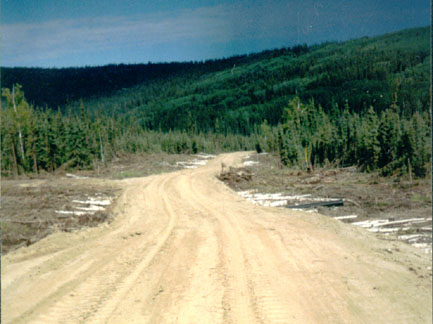TANANA VALLEY STATE FOREST FOREST ROADS INFORMATION THE STATE
montanana11_pubTANANA VALLEY STATE FOREST FOREST ROADS INFORMATION THE STATE
Tanana Valley State Forest
Tanana Valley State Forest
Forest Roads Information
The state forest contains two general kinds of roads, highway system and forest management roads. Highway roads serve general public transportation needs. They include the main State highways, subdivision and agricultural roads managed by the Department of Transportation and Public Facilities or a local authority. Forest management roads are under Division of Forestry management and provide access for logging, fire control, forest recreation and other uses. Appendix F of the TVSF Management Plan contains standards for these five types of forest roads. The standards and pictures of these roads are on the following pages.
Primary All Season Road
A primary road is a main arterial into a unit or large subunit of the forest. They will usually be 5 to 25 miles long, allow speeds over 20 mph, and are intended for long-term use. They will generally be 1½ lanes allowing for slow, careful passing of large trucks. All season roads are intended for summer and winter use but may not be passable in wet weather. They are constructed from on-site materials but may be surfaced with gravel over wet or erosion prone sections. They are located on drier, thaw-stable soils as much as possible. On boggy or permafrost soils they will usually be constructed using a fill of dry embankment material placed over the natural ground.
Secondary All Season Road
A secondary road will typically be a 1 to 5 mile branch off a primary road or highway. It will provide long-term access to within a mile of multiple forest operations. Use may be intermittent. It will usually be narrower and have sharper curves and steeper grades than a primary road, requiring slower speeds. Passing widths for large trucks may be limited to wider turnouts. Construction methods are the same as primary roads, but gravel fills or surfacing will be used less frequently.
Spur Roads
A spur is a short road built to access a specific forest management action, such as a timber sale. They are not part of the permanent forest transportation network and are only used for the duration of the action. Spur roads are single lane without provision for passing and allow speeds of 5 to 15 mph.
Table F-1 Northern Region Forest Road Standards
|
|
Primary all-season road 1 |
Secondary all-season road |
Spur Road |
Primary winter road |
Secondary winter road |
|
Level of Use |
Moderate to heavy. Long-term. Year-round. |
Light to moderate. Medium to long-term. Year-round. |
Light. Short-term. |
Moderate to heavy. Long-term. |
Light to moderate. Medium to long-term. |
|
Curve Radius |
300’ normal design. 100’ minimum2. Curve widening on minimum-radius curves. |
100’ normal design. 60’ minimum2. |
Same as secondary all-season road. |
Same as primary all-season road. |
Same as secondary all-season road. |
|
Grade |
8% normal. 10% maximum. |
15% maximum favorable. 10% maximum adverse. |
20% maximum. |
Same as primary all-season road. |
Same as secondary all-season road. |
|
Drivable Surface |
16’-20’ width and rock surfacing may be required. |
12’-16’ width.
|
10’ to 16’ width. |
16’ to 20’ width. |
Same as secondary all-season road. |
|
Turnouts |
Not required if at least 18’ width drivable surface. Otherwise: 1000’ maximum interval, intervisible. 25’ ingress, 25’ egress, 50’ full. 12’ width. |
Same as primary all-season roads |
Not required. |
Same as primary all-season road. |
Same as primary winter road. |
|
Cut and Fill |
Fill
slope castings 1½:1 angle maximum. |
Same as primary all-season roads. |
Avoid where feasible and prudent. |
Minimize cuts and fills in thaw-unstable permafrost. Avoid where feasible and prudent, cuts in thaw-unstable permafrost; exceptions will be identified in the FLUP. |
Avoid where feasible and prudent. Exceptions will be identified in the FLUP. |
|
Cleaning |
5’ beyond cuts or fills, or minimum of 35’ width. Merchantable timber cut and decked ahead of construction. |
5’ beyond cuts or fills, or minimum of 30’ width. Merchantable timber cut and decked ahead of construction. |
Minimum 12’. Merchantable timber cut and decked ahead of construction. |
Minimum 16’. |
Minimum 12’. |
|
Grubbing |
Removal of stumps, roots, and organic from the roadbed to outside of ditches unless top of stumps under 2’ of fill. |
Same as primary all-season roads |
Under drivable surface. |
Partial removal of surface organics only as needed to provide a level running surface. |
Same as Primary winter road. |
|
Debris Disposal |
If at least 2’ beyond ditches may be windrowed or placed in push-outs. If closer, buried under at least 1’ of fill. |
Same as primary all-season roads. |
Use windrowing or push-out techniques as appropriate. |
Same as spur road. |
Same as spur road. |
|
Permafrost |
Avoid exposing thaw-unstable permafrost through routing or using raised fill construction. If exposed, minimize sedimentation with effective erosion control measures. See also 11 AAC 95.290 (c). |
Same as primary all-season roads. |
Avoid exposure of thaw-unstable permafrost. If exposed, stabilize by treating with effective and appropriate measures such as recovering exposed soils, seeding, drainage structures, and settling basins. (See also 11 AAC 95.290(c), (g); .295(g).) |
Same as spur road. |
Same as spur road. |
|
Ditches |
1.0’ minimum depth. 2.0’ minimum width. Block ditch on downhill side of culvert inlet, where needed. |
Block ditch on downhill side of culvert inlet where needed. |
As needed. |
None. |
None. |
|
Culverts |
Minimum diameter 12” except as stated in 11 AAC 95.295. Installed at or below natural ground line. Installed at natural stream gradient. |
Same as primary all-season roads. |
Same as primary all-season roads. |
Same as primary all-season roads. |
Same as primary all-season roads. |
|
Maintenance |
Grading and ditching as necessary. |
Grading and ditching as necessary. Maintained or closed after logging use. |
Closed or treated as per 11 AAC 95.315(c) after logging use. |
Open drainages before breakup. |
Closed or treated as per 11 AAC 95.315(c) after logging use. Open drainages before breakup. |
1Higher-construction standards may be needed for site-specific projects and conditions. 2To be applied only under topographically limiting conditions.
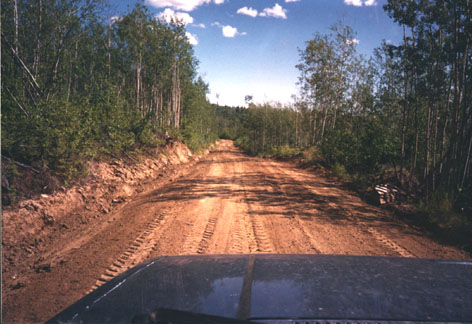 Newly
built primary all-season road. Balanced cut and fill construction of
on site material with ditch on uphill side
Newly
built primary all-season road. Balanced cut and fill construction of
on site material with ditch on uphill side
T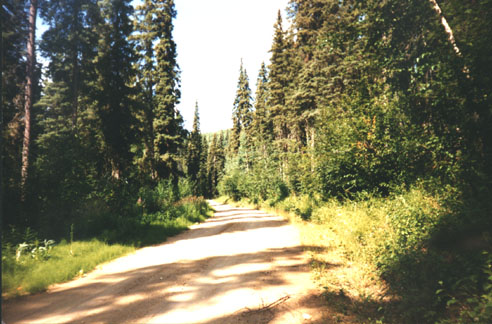
ypical
primary all-season road after 10 years of use.
F
ull
bench construction of primary all-season road on steep side slope.
All-season road built over permafrost using fill placed on log corduroy. A winter road could have been built on this section by smooting the natural surface rather than placing fill.

Established secondary all-seaon road. Note stable vertical cut of loess soil.

Initial clearing of secondary all-season road. Road has been cleared and stumps and roots grubbed from the road bed. Debris disposal, ditching, and surface grading have not yet been done.
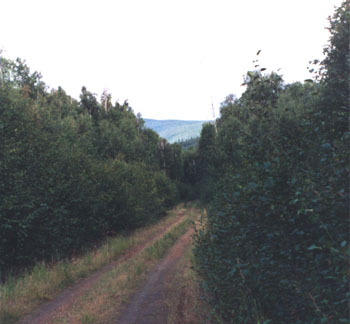
A stabilized inactive secondary road that receives occasional recreational use.

A typical single-lane wooden bridge on a secondary all-season road.

An established secondary all-season road.

A typical spur road within a timber sale used for loading logs
S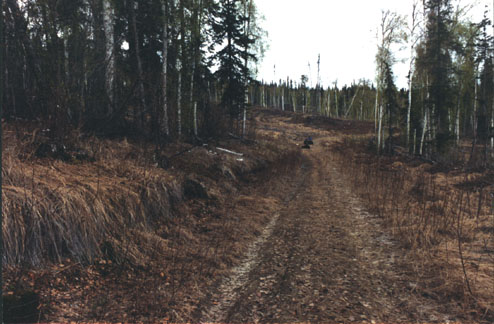
pur
road one year after use

Spur road leading to timber sale
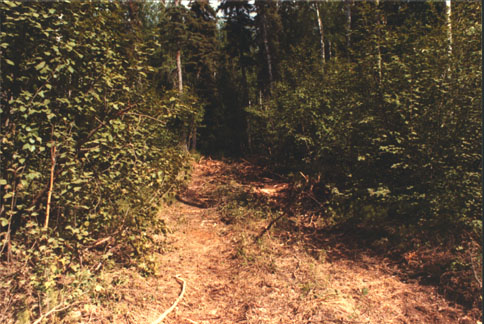
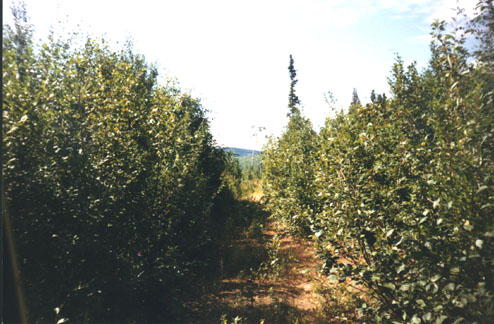
Inactive spur roads. Both were stabilized after use and are becoming overgrown.

A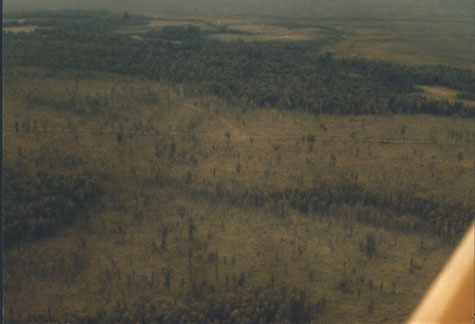
erial
view of established winter roads in winter (top and in summer
(bottom). The road crosses permafrost with open black spruce and
thick surface organic layer.

W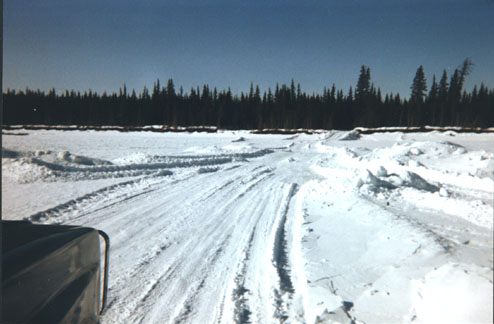
inter
spur road within a timber harvest area.
An ice bridge crossing the Tanana River. Note snow ramp on opposite bank.
A
winter road in use. Winter roads can be used for about four months
each year.

Construction of a winter road in January through black spruce. Trees and stumps are removed and the surface smoothed leaving a layer of organic material and most of the root mat as the road surface.
S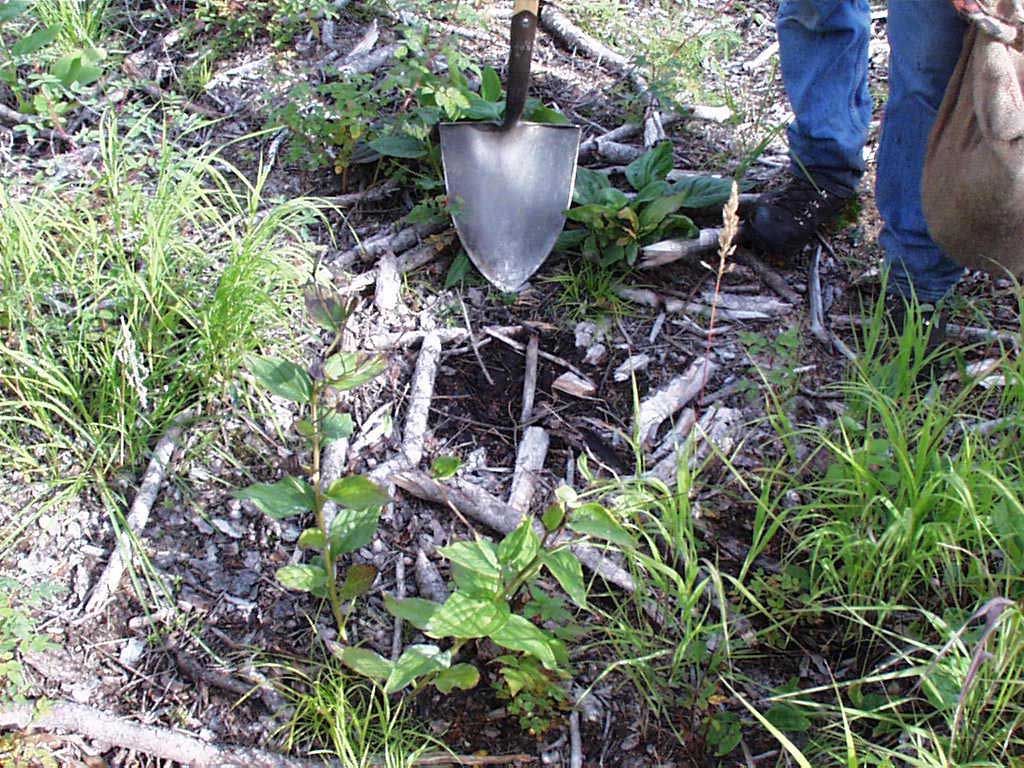
urface
of winter road three years after clearing shown in previous picture.
Surface is composed of organic mat and clearing debris. Grass and
shrubs have sprouted from roots within the organic mat.
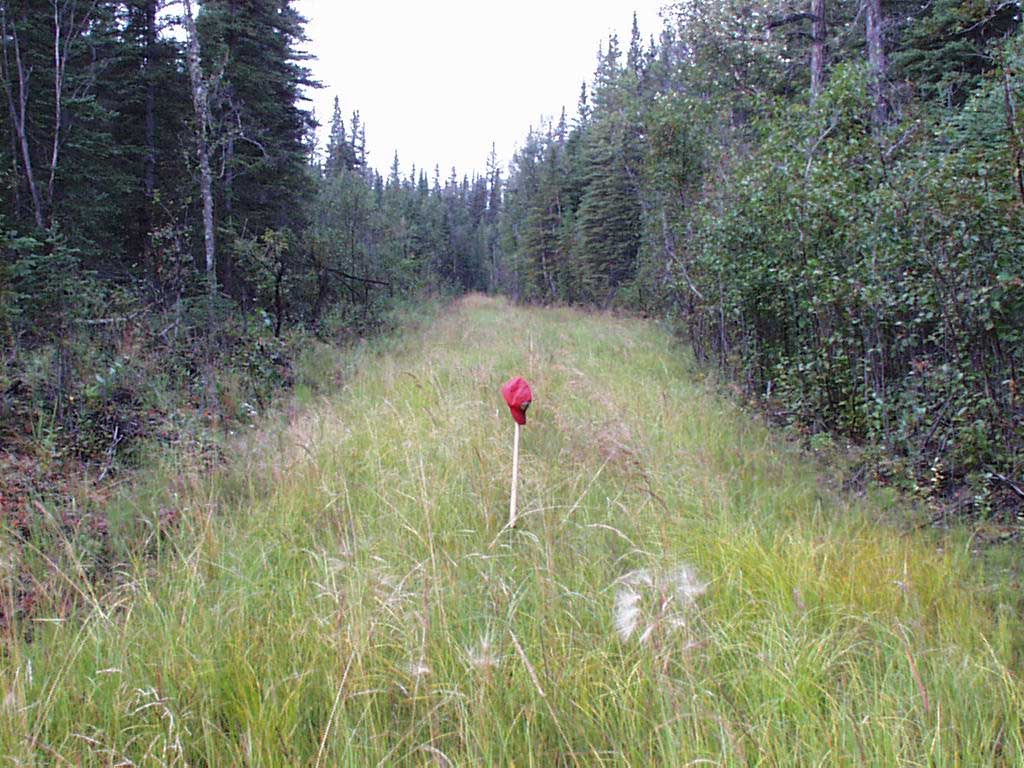
Summer view of natural grass cover on winter road.
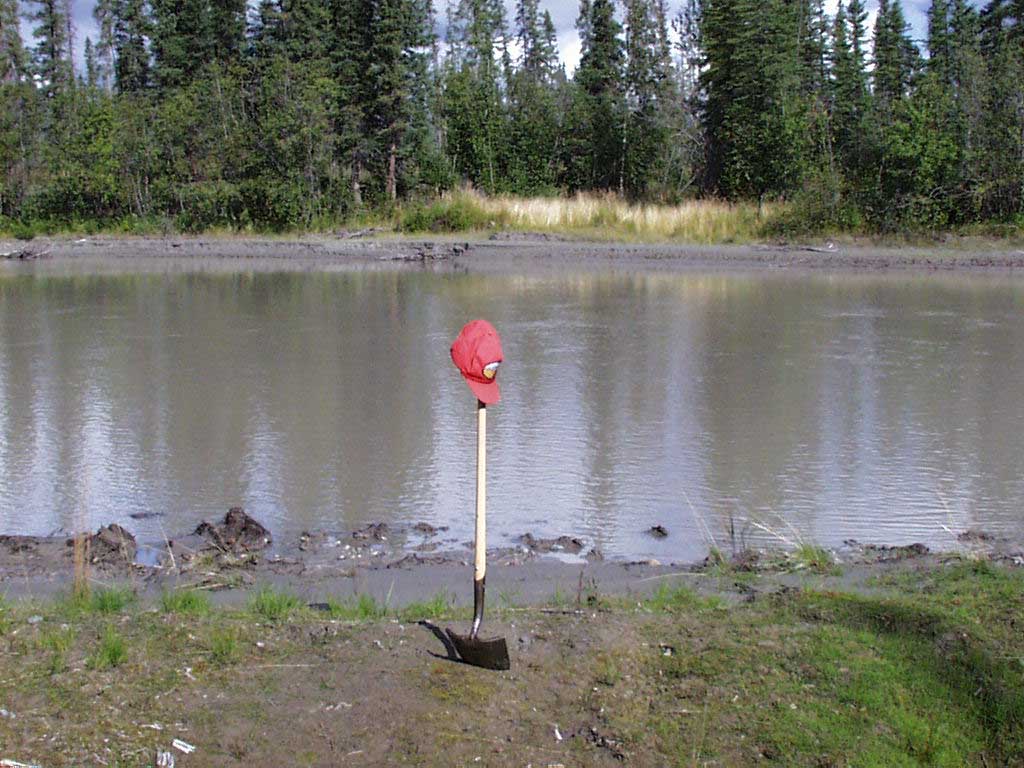
Summer view of the site of an ice bridge across a channel of the Tanana River.
October, 2001 - Tanana Valley State Forest – Forest Roads
Information
Tags: forest forest, – forest, state, forest, information, roads, tanana, valley
- MODEL ORDINANCE SOCIAL HOST DEFINITIONS ALCOHOL ETHYL ALCOHOL HYDRATED
- EUROPOS KOMISIJA GENERALINIO DIREKTORATO JUNGTINIS TYRIMŲ CENTRAS ATEITIES TECHNOLOGINIŲ
- INIZIO MODULO CUESTIONARIO NECESIDADES FORMATIVAS INSTITUTO ESCUELA A
- NINIEJSZA INFORMACJA PRZEDSTAWIA NAJWAŻNIEJSZE PRACE JAKIE ZOSTAŁY ZREALIZOWANE PRZEZ
- COUNTER OFFER PITFALLS EXAMINE YOUR INITIAL REASONS FOR WANTING
- (NOTE ITEMS IN ITALICS ARE TO BE FILLED IN
- ZESTAW A TRANSPORT SAMOCHODOWY NA PODSTAWIE PODRĘCZNIKA I ATLASU
- LA DIFUSIÓN DEL ISLAM EN ÁFRICA OCCIDENTAL انتشار الإسلام
- CURRICULUM VITAE ANWAR AHMED PHD (ASSISTANT PROFESSOR) MAILING ADDRESS
- KLASA 33501100101 URBROJ 2137010511057 KOPRIVNICA21072010 NA TEMELJU ČLANKA 55
- CONSTANTE DE AVOGADRO MOL GASES IES LA MAGDALENA AVILÉS
- MEMORIA TÉCNICA MOVES 2020 ACTUACIÓN 3 IMPLANTACIÓN DE SISTEMAS
- WHO TRAINED? CALDERDALE FIRST MODULE (TEN SESSIONS)
- WIPOIPSEL13INF 2 PROV PAGE 5 E KOREAN INTELLECTUAL PROPERTY
- PRESCRIPCIONES TECNICAS CÓDIGO ARTÍCULO ESPECIFICACIONES TÉCNICAS 970013 970015 970016
- EJERCICIOS PARA EL SEGUNDO PARCIAL (ITERACIONES FOR Y WHILE)
- ANAK LAMPIRAN 1B PERATURAN BADAN KEPEGAWAIAN NEGARA REPUBLIK INDONESIA
- EXCERPT FROM THE MINUTES OF THE SPECIAL SESSION OF
- AJUNTAMENT DE PATERNA (VALENCIA) INFORME CIRCUNVALACIÓN EXTERIOR DE VALENCIA
- THE MANCHESTER WOMEN’S CONFERENCE A NOTFORPROFIT ORGANISATION FOR RESEARCH
- COMMONLY USED REVENUE ACCOUNT CODES ALL OTHER REVENUE REVENUE
- JAROCIN DNIA 09092008R BZPRI 341 P 34
- 7 UNIVERSIDAD DIEGO PORTALES FACULTAD DE CIENCIAS DE LA
- N K TOVEY ENV2E1Y FLUVIAL GEOMORPHOLOGY 2004– 2005 SECTION
- 1 SŠ DOMŽALE GIMNAZIJA 644768DOCŠOL L CESTA TALCEV
- COACH DEVELOPMENT FACILITATORS LISTENING AND EMOTIONAL INTELLIGENCE (EQ) MODULE
- INSTRUCCIONES DE USO ADVERTENCIA EL PRESENTE MODELO DE ACTA
- 07011014 LES REGLES DE L’ACCENTUACIÓ LA A SEMPRE LA
- POWERPLUSWATERMARKOBJECT29761908 KERTAS KERJA CADANGAN MEMBINA DAN MENGUBAHSUAI BANGUNAN KELAS
- FORMULARIO 1 FORMULARIO DE SOLICITUD IDENTIFICACIÓN DEL CENTRODEPARTAMENTOFACULTAD NOMBRE
SZCZEGÓŁOWA SPECYFIKACJA TECHNICZNA B0400 BETON 1 WSTĘP 11 PRZEDMIOT
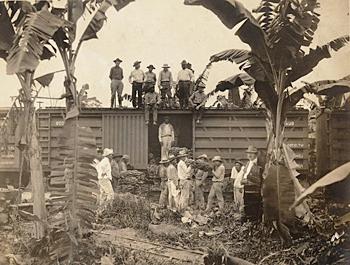 AUTORORIGEN GABRIEL “GABITO” GARCÍA MÁRQUEZ NACE EN ARACATACA COLOMBIA
AUTORORIGEN GABRIEL “GABITO” GARCÍA MÁRQUEZ NACE EN ARACATACA COLOMBIAZAGADNIENIA NA EGZAMIN LICENCJACKI KIERUNEK SOCJOLOGIA SPECJALNOŚĆ KRYMINOLOGIA I
 13 RAZLAGALNO GRADIVO DATUM 19 09 2016 PROJEKTA »OSKRBA
13 RAZLAGALNO GRADIVO DATUM 19 09 2016 PROJEKTA »OSKRBATELEFON REHBERİ TELEFON 0342 360 12 00 FAKS
BUILDING RAPPORT WITH YOUR CUSTOMERS HELLO MY NAME IS
11 PROGRAMA DOCENTE TITULACIÓNINGENIERÍA INDUSTRIAL ESPECIALIDADMECÁNICA MATERIAMECÁNICA DE FLUIDOS
………………………DNIA…………………… (MIEJSCOWOŚĆ) ………………………… ………………………… (NAZWA I ADRES ARMATORA) DYREKTOR
AUSGEWÄHLTE SPRACHLICHSTILISTISCHE MITTEL DER LATEINISCHEN LITERATUR FÜR DIE ARBEIT
 L EMBAR PENILAIAN MAGANG MAHASISWA PROGRAM STUDI ILMU HUBUNGAN
L EMBAR PENILAIAN MAGANG MAHASISWA PROGRAM STUDI ILMU HUBUNGANNA PODLAGI ZAKONA O DRUŠTVIH (UR LIST RS ŠT
 CONTACT NICK COCCIA NAAMS PROJECT MANAGER MOBILE 2488602717
CONTACT NICK COCCIA NAAMS PROJECT MANAGER MOBILE 2488602717 040 GGZ BREBURG GEDRAGSCODE SOORT DOCUMENT BELEID INGANGSDATUM 01062011
040 GGZ BREBURG GEDRAGSCODE SOORT DOCUMENT BELEID INGANGSDATUM 01062011 REPUBLIKA HRVATSKA KARLOVAČKA ŽUPANIJA GRAD DUGA RESA
REPUBLIKA HRVATSKA KARLOVAČKA ŽUPANIJA GRAD DUGA RESA NHS NO COMMUNITY CARDIAC SERVICE REFERRAL FORM FOR
NHS NO COMMUNITY CARDIAC SERVICE REFERRAL FORM FOR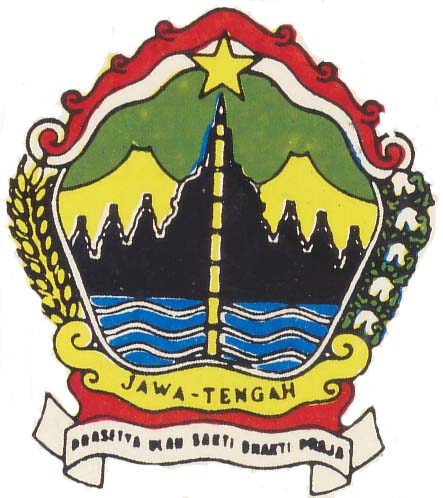 SATUAN KERJA PEMBENIHAN DAN BUDIDAYA IKAN AIR TAWAR (PBIAT)
SATUAN KERJA PEMBENIHAN DAN BUDIDAYA IKAN AIR TAWAR (PBIAT)VPRAŠALNIK ZA UGOTAVLJANJE POVEZANOSTI Z VISOKO TVEGANO DRŽAVO PODATKI
FIRMENGEMEINSCHAFTSAUSSTELLUNG DER BUNDESREPUBLIK DEUTSCHLAND FRUIT ATTRACTION OBST UND
PANCREATIC CYST FLUID DILUTED OR PLACE LABEL ON SPECIMEN
LA PERSONALIDAD ENIGMÁTICA DE NASH POR MIGUEL ÁNGEL GOBERNA
